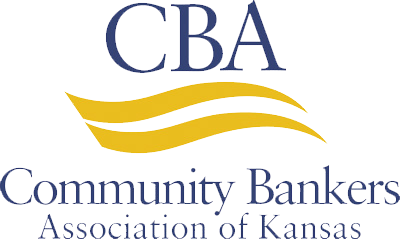Many community banks “graduate” to a different level of scrutiny under the Community Reinvestment Act (CRA), either through organic growth or by acquiring other financial institutions.
Most community banks are considered “small banks” under the CRA rules of the federal supervisory agencies because of their size. A “small bank” in 2021 is one that, as of Dec. 31 of the previous two calendar years (2019 and 2020), had total assets of less than $1.322 billion. An “intermediate small bank” is one with assets of at least $330 million but less than $1.322 billion.
At some point, many of these banks grow to the point that they move up through the ranks to become “intermediate small banks” or “large banks” when they pass these dollar thresholds for two years in a row. The dollar thresholds are updated annually to adjust for changes in the Consumer Price Index.
A “small bank” can become an “intermediate small bank” by growing beyond the $330 million threshold – through natural growth in loans and deposits or by acquisition of either whole institutions or portfolios of their assets or liabilities.
How to “graduate”
A “small bank” can become an “intermediate small bank” by growing beyond the $330 million threshold – through natural growth in loans and deposits or by acquisition of either whole institutions or portfolios of their assets or liabilities.
Similarly, an “intermediate small bank” can become a “large bank” by growing over the $1.322 billion threshold through organic increase in assets or by acquisition of additional institutions or assets.
Different evaluations
The CRA performance of a “small bank” is evaluated under a streamlined process that focuses largely on its loan-to-deposit (LTD) ratio and its lending distribution. If the bank meets the following criteria, it can expect at least a “satisfactory” CRA rating:
- Its LTD measure is “reasonable”
- A majority of its loans are in its assessment area(s)
- Its loans are distributed to individuals and businesses of different income levels
- The geographic distribution of its loans is reasonable
- There are no fair lending concerns
An “intermediate small bank” is evaluated under the above process, plus the following additional criteria (a modified “lending test”):
- Number and amount of community development loans
- Number and amount of qualified investments
- Extent to which the bank provides community development services, and
- Responsiveness through such activities to community development lending, investment, and services needs
On the other hand, a “large bank” faces a much more complicated evaluation. The CRA examination and rating systems for these institutions is a three-pronged process comprised of:
- Lending test (responsiveness to credit needs; geographic and demographic distribution of loans; record of serving the credit needs of economically disadvantaged, areas, businesses, and individuals; use of innovative or flexible lending practices; level of community development loans)
- Investment test (level of qualified investments, particularly those not routinely provided by private investors; use of innovative or complex qualified investments; responsiveness to area credit and community development needs)
- Service test (accessibility of service-delivery systems to areas and individuals of different income levels; record of improving accessibility through branch openings and closings; extent to which services are tailored to convenience and needs of its area; record of providing community development services)
There are two very good reasons for maintaining active communication with your community. An ongoing dialogue allows the bank to become aware of local needs and how to meet those needs profitably.
Nine steps to success
When you see that you are approaching graduation to “intermediate small bank” or especially to “large bank” status, you need to begin planning for a smooth transition. You should consider taking the following nine steps:
- Set up a transition team. You can use an existing CRA committee, perhaps adding new or more senior members (if needed). Senior managers, including the CEO and compliance officer, should be involved in this process – including representatives of all functional areas within the bank.
- Prepare for data collection and analysis requirements. As a “large bank,” the bank will be required to collect and submit data on its small business and small farm lending to your supervisor each year. Reports are generated from these data, reports that play an important part in your CRA evaluation. If you are subject to the Home Mortgage Disclosure Act (HMDA), then your home lending data is also considered. The bank may also choose to have its consumer lending considered if that lending makes up a significant portion of your lending.
You will need to evaluate your current management information systems (MIS) to ensure that they will provide the required data – for small business and small farm lending, as well as expanded HMDA information. Do you already have reporting processes in place for community development loans and investments? Can your MIS be organized to reveal geographic and borrower characteristics, by assessment area, for bank and examiner analysis of the data? Should you collect data for consumer loans in one or more of the five optional categories? - Perform a baseline assessment. To gauge where your bank stands now, you should consider performing a thorough review of how the bank meets, as applicable, the modified “lending test” for an “intermediate small bank” or each of the three “large bank” CRA performance tests. Objectively assign ratings just like the examiners will, using the rating system in the CRA rules. You should assess areas for which you already have data and then create additional systems using new data sources and analysis tools.
Is your assessment area still reasonable? Would you earn at least a “satisfactory” rating from CRA examiners? What performance areas need attention? What changes do you need to make? - Define your CRA mission, goals, and strategies. Performing some CRA strategic planning, as in other areas, can guide your performance and help you maximize the involvement and contribution of all areas within the bank. The senior transition team should think through at least the three core CRA goals that most banks really care about – promoting community well-being, since your bank is a community leader and this helps maintain an economically healthy market; doing business profitably, including serving low- and moderate-income (LMI) customers and areas as desirable business; and regulatory risk management, that is, avoiding regulatory problems.
Do you have a corporate-wide mission statement that is a dynamic statement of the purpose of your CRA and community investment program? Have you set specific, measurable goals that reflect your business purposes and the applicable larger bank performance tests? Have you established accountabilities and strategies to achieve these goals? Do you have a larger bank CRA implementation schedule set up so you can fully meet your new requirements and performance standards? - Ensure full fair lending compliance. Fair lending issues pose a significant CRA risk for many banks. All your other work to enhance your CRA program can be brought down by fair lending problems, even subtle and unintentional forms of discrimination. You cannot earn a “satisfactory” CRA rating if examiners find any evidence of lending discrimination.
Have all staff been trained how to avoid subtle disparate treatment by helping some customers more than others? Are there potential disparate impact issues in your loan programs – from marketing to underwriting to collections? Does the bank conduct a regular fair lending self-assessment to ensure that similar applicants receive similar treatment and outcomes? Is a formal second review process in place to ensure that lending decisions are consistent without regard to any “prohibited basis”? Do your marketing and delivery systems effectively reach a diverse market? - Establish supporting strategies to meet CRA goals. Detailed strategies should be developed for making progress in all organizational units within the bank and throughout your CRA assessment area.
Have any identified gaps in lending been evaluated to determine whether products and underwriting standards are effectively matched to your target market? Is bank marketing directed to all customer segments within your assessment area? Have any identified gaps in service delivery systems been evaluated for any new approaches needed in delivering credit and other services? Are your investment options actively evaluated to ensure that investment test standards are met or exceeded? - Train staff in the new CRA program. All personnel should be trained, at a level appropriate for their role at the bank, in the larger bank requirements of the CRA rules and the specifics of the bank’s program to meet or exceed those expectations. Management and the directors need to be briefed on the larger bank requirements. All staff needs training in the bank’s CRA program and their roles and accountabilities. Lending staff needs guidance on extending credit successfully and safely, and soundly in nontraditional areas – such as affordable mortgages, government-backed loans, and other community development credits.
- Communicate with the local community. Under a formal CRA strategic plan, such communication is required. However, it is still essential for the bank to gain input from local businesses, government, and community leaders and share your plans with them.
There are two very good reasons for maintaining active communication with your community. An ongoing dialogue allows the bank to become aware of local needs and how to meet those needs profitably. A negative reason is that the CRA rules provide many opportunities for community members to comment on your performance – including during a CRA examination or when a corporate application is being considered by supervisors. - Meet the new technical requirements. Besides maintaining a CRA public file, posting lobby notices, and the other technical requirements that all financial institutions must meet, there are some additional obligations for “large banks.” These include small business and small farm loan data collection rules and somewhat expanded public file disclosure requirements.
Your bank will be well served as you approach “intermediate small bank” or “large bank” CRA status by early and thorough consideration of the issues raised in this article. And be sure to take an objective look at where you are and where you should be. Glossing over shortcomings or minimizing enhanced expectations and requirements will not serve the bank’s interests.
William J. Showalter, CRCM, CRP, is a Senior Consultant with Young & Associates, Inc. (younginc.com), with over 35 years experience in compliance consulting, advising and assisting financial institutions on consumer compliance and compliance management issues. He has authored or co-authored numerous compliance publications and articles and developed and conducted compliance training programs for individual banks and their trade associations. Bill can be reached at
(330) 678-0524 or wshowalter@younginc.com.









